Before we jump in head first, here’s what you can expect out of this post: how to perfectly hard boil an egg every time, how to quickly boil an egg, how to peel a boiled egg, random egg facts, and some good old fashioned tom foolery. Fellow pinners, feel free to share any of these pictures, but I have created a Pinterest-friendly egg infographic-esque image that you might find handy. You can find that just below. Now on to the main eggvent!
We’ll come back to the egg as it relates to cooking in just a bit (specifically how to hard boil an egg), but first come along with me as I take a stroll through memory lane. If you’d rather not peep into my past, go ahead and skip to the next section.
As I was working on this post I was reminded of a recurring nightmare that plagued me as a child. In it a giant chicken terrorized the streets looking for one thing and one thing only: me. It always started out with me hearing screams coming from the neighbors down the street. Instinctively I knew what was coming, and I’d start to run and look for somewhere to hide. As everyone else scattered, I would still be running across our lawn trying to get into the house (how is it that it’s impossible to run away in dreams?). Out of nowhere, giant eggs would appear on the lawn and in the street just waiting to hatch more carnivorous, Chris-eating chickens. There were a couple times where I woke up before reaching the door; other times I would make it inside and run to my hiding place in the computer room trying to make myself as small as possible. Within seconds, the giant chicken would be in the room with me, sniffing me out. I was terrified of chickens. Chickens and I were not friends.
Infographic for Pinners
(Another option is to visit the original pin and just re-pin it from there.)
In retrospect I think these nightmares stemmed from beheading chickens through the years on my grandpa’s farm. Actually (and I chuckle as I write this), we have a family video where my grandpa tossed a beheaded chicken towards us 3- to 5-year old kids as we stood around captivated by the scene before us. We scattered while screaming for our lives. I’d like to digitize that video.
Hopefully that nightmare doesn’t come back to haunt me. *shudder*
Now let’s get back to business and learn one of the easiest, yet misunderstood, ways to prepare the amazingly versatile egg: hard boiling.
How to Make a Perfect Hard Boiled Egg
Boiling an egg isn’t too difficult, it’s really just a matter of heating an egg in hot water, though I have found that most people overcook their eggs. I can understand this, as we’ve been trained to fear raw eggs. The following method is how I hard boil my eggs (we’ll go into another method later). Using this method you won’t have to worry about your egg being either raw or overdone. It comes out just right every single time—I’m not kidding. My kids and I had fun drawing faces on these eggs before boiling them, but you’re not required to do that… but you can if you want. It is kind of groovy.
Step 1: Place your eggs in a pan and fill it with cold water until it’s at least an inch over the tops of the eggs.
Step 2: Add about a teaspoon of salt to the water (it’s not important to measure this accurately) and turn the heat to high. In my experiments I have found that adding salt to the water really does make them easier to peel later on. If you’re using older eggs adding salt becomes negligible (read about peeling eggs below)
Step 3: Once the water reaches a mid-range boil (210°F-212°F, or just as it begins to reach a vehement boil), cover the pot and pull it off the heat. Let it sit for 10 minutes.
Step 4: While the eggs are sitting covered, prepare an ice bath for the eggs.
Step 5: When the 10 minutes is up, scoop the eggs out with a slotted spoon and add them to the ice bath and leave them there for a few minutes so that they stop cooking completely. This takes 2-4 minutes.
Step 6: At this point they’re ready to eat! Peel them or dry them off and put them back in the fridge… or anything, really (toss them off a balcony?). I figure whatever a person does with their eggs is their own business. Here’s a picture of what an egg prepared this way looks like. Notice that the yolk is a soft yellow and remains moist. The center pulls in a little bit and forms a nice little whip, which is exactly how I like them.
Have you prepared your eggs this way? If not, give it a shot. I’m positive you’ll find the results of this method very satisfactory. There is a downfall, however to this method, and that’s time. It takes a bit longer to cook an egg this way than just pure boiling them. The benefits, though, is that your egg remains soft… the key to working with eggs after all is handling them with a little TLC.
Boiled Eggs vs. Time Cooked
Perhaps you’re in a hurry and want your hard boiled eggs done in half that time. You can do that by not removing them from the heat and letting the eggs cook in a rolling boil for 4 to 6 minutes. You should still prepare an ice bath for them though or you’ll wind up with severely overcooked eggs.
The steps are practically the same as outlined above:
- Place your eggs in a pan and cover them with cold water (at least an inch over the tops).
- Add a teaspoon of salt or so and turn up the heat!
- Once the water reaches a full boil, start the timer (see images below)
- Pull the eggs out at your desired time (I like 5 minutes) and immediately place them into an ice bath to prevent further cooking.
- Peel and serve, yum!
The pictures and times below are based on time cooked immediately as the water reached a full (a.k.a. rolling or complete) boil. In other words, the water is past the simmering or gentle boil stage; steam is likely visible and the bubbles are dancing about more energetically. You can learn more about boiling water from this article (like what “full boil” means): How to Boil Water. It’s surprisingly interesting. On to the pictures!
Here is a quick and dirty break down of what to expect at the different stages:
- 1 to 3 minutes (not done): Yolk remains gooey and orange. Egg white is cooked by 1 minute.
- 4 to 6 minutes (done): Yolk changes to a lighter yellow and center is more pulled together and creamy. At 6 minutes the yolk begins to dry out.
- 7 minutes (overdone): Yolk is noticeably dryer and chalky. This is when the grayish green starts to form around the edges of the yolk.
- 8 + minutes (way overdone): Go ahead and do it, but your egg will be more akin to rubber than an egg.
How to Peel a Hard Boiled Egg
I’ve been experimenting with ways to peel hard boiled eggs through the years and the method I show below is the best way I’ve found to date. I can get the shell off without much of a struggle nearly every time (there are always exceptions).
– Adding salt to your water when boiling helps them peel easier (a must for new eggs).
– I prefer a dry shell… I’m not sure if it makes a difference, but it seems to me to peel better than when it’s wet.
To peel an egg quickly and without getting shell all over the place you’re going to need a regular-sized dinner spoon and a hard boiled egg… but you knew that last part already. To demonstrate how awesome this method is, my little kiddo is going to demonstrate how it’s done (pictures below).
Begin be cracking the shell all over with the spoon. Be gentle, you don’t want to accidentally split the egg white. Leave no shell uncracked!
Pinch off shell at the fat end of the egg and then work the spoon underneath the shell, gently sliding and pulling it up around the egg’s parameter. The shell will start to come off in large chunks. Let it shed, let it shed.
And that’s pretty much it. Rinse it off when you’re done. Here’s a picture of the many eggs we shelled for this ridiculously long egg post. Once you get the hang of it, you’ll be shelling eggs faster than anyone in your neighborhood. Careful though, or your neighbors might start bringing their eggs to you (I would charge at least 50 cents per egg).
Egg Nutrition Facts and Information
Just in case you’re interested, I’ve gathered the nutritional data for a whole egg, an egg yolk, and just the egg white. I’m not going to claim any expertise in what it all means though. I do know egg yolks have a lot of cholesterol, so even though I eat eggs every day, I avoid eating too many yolks. If you have any egg health knowledge you’d like to share, please do in the comments below.
The following nutritional values are for 1 large Egg. The Percent Daily Values are based on a 2,000 calorie diet. Information from NutrionData.com.
Whole Egg
Serving Size: 50 g
Amount Per Serving
Calories: 77
Calories from Fat: 48
Total Fat: 5g (8% DV)
Saturated Fat: 2g (8% DV)
Trans Fat: N/A
Cholesterol: 212mg (71% DV)
Sodium: 62mg (3% DV)
Total Carbohydrate: 1g (0% DV)
Dietary Fiber 0g (0% DV)
Sugars: 1g
Protein: 6g
Vitamin A: 6%
Vitamin C: 0%
Calcium: 2%
Iron: 3%
Source: NutritionData.com
Egg White
Serving Size: 33 g
Amount Per Serving
Calories: 16
Calories from Fat: 1
Total Fat: 0g (0% DV)
Saturated Fat: 0g (0% DV)
Trans Fat: N/A
Cholesterol: 0mg (0% DV)
Sodium: 55mg (2% DV)
Total Carbohydrate: 0g (0% DV)
Dietary Fiber: 0g (0% DV)
Sugars: 0g
Protein: 4g
Vitamin A: 0%
Vitamin C: 0%
Calcium: 0%
Iron: 0%
Source: NutritionData.com
Egg Yolk
Serving Size: 17 g
Amount Per Serving
Calories: 54
Calories from Fat: 41
Total Fat: 5g (7% DV)
Saturated Fat: 2g (8% DV)
Trans Fat: N/A
Cholesterol: 210mg (70% DV)
Sodium: 8mg (0% DV)
Total Carbohydrate: 1g (0% DV)
Dietary Fiber: 0g (0% DV)
Sugars: 0g
Protein: 3g
Vitamin A: 5%
Vitamin C: 0%
Calcium: 2%
Iron: 3%
Source: NutritionData.com
You can find additional egg nutritional data on Calorie Count, MyFitnessPal.com, FatSecret.com, and IndredibleEgg.org.
10 Chicken Egg Facts and TidBits
I’m the kind of guy who enjoys learning all sorts of random things, and in the spirit of that, I decided it might be fun to gather a few “fun egg facts” to share with you… I did say eggs were versatile, right? Enjoy!
- Eggs are known to help with weight loss, especially when eaten in the morning as they help you feel full longer and give you energy. Yay for high-quality protein! (IncredibleEgg.org | Retrieved 16 Feb 2013)
- An egg shell can have as many as 17,000 pores on it’s surface. These allow oxygen to get in and out of the egg but will also cause the egg to take on the flavors, smells and ultimately tastes of things around it. Wouldn’t that be an interesting experiment? (DidYouKnow.org | Retrieved 16 Feb 2013)
- It’s said that only 1 in 10,000 eggs contain salmonella. This means that the chance your raw cookie dough and brownie batter has salmonella is pretty small, but there’s still a chance. The question then becomes, “Is this bite of cookie dough worth the risk?” Psshh, heck yeah! (SafeEggs.com | Retrieved 16 Feb 2013)
- Eggs have rich symbolic history. Across many cultures they’ve been used to “symbolize birth and are believed to ensure fertility. They also symbolize rebirth, and thus long life and even immortality.” So eat up. (FoodTimeline.org | Retrieved 16 Feb 2013)
- Recipes that ask for eggs but don’t specify the size are typically referring to large eggs as they weigh ~2 oz. and make cooking by either mass and volume nice and easy.
- Dreaming about eggs could symbolize all sorts of things, but some interpretations include your cosmic potential, the fragility of a certain situation in your life, or if your dreamed of cracked eggs it could symbolize the disappointment of broken dreams and desires. I personally dream of food all the time, but I have yet to dream of eggs… I probably will after writing this post. (Suite101.com)
- That white stringy thing in eggs is called the chalazae (chalaza singular). (That’s a fun word!) There’s one chalaza on each side of yolk, spun in opposite directions; their job is to keep the yolk centered. I prefer not to think about it when cooking as it seems a bit grotesque to me, but you can scramble it, pluck it, hard boil it, or mix it in with your egg whites without and problems. (Imagination Station | Retrieved 16 Feb 2013)
- Bloody Egg! Ack! Fear not my fine feathered friend, a little bit of blood in your egg is still okay to consume as long as it’s cooked. Blood in eggs still grosses me out, so I prefer to pick it out with a the tip of a knife or fork. The blood is caused when a blood vessel ruptures during the formation of the egg. Every once in a while I get a really bloody egg, and I just toss those. (IncredibleEgg.org | Retrieved 16 Feb 2013)
- Before you buy your eggs, always check by moving each egg to see if it’s cracked. If you DO wind up with a cracked egg anyway (hey, it happens), chances are it’s still okay to eat. Eggs have two inner membranes that help protect the egg even if the shell is cracked (remember, the shell does have pours in it already). If those membranes are broken, the egg will likely already be leaked out. I throw out any eggs whose membranes have ruptured.
- You can test if an egg is hard boiled or raw by spinning the eggs on a flat surface. Hard boiled eggs have a nice smooth spin whilst raw eggs wobble. I hear that another effective test is to take an egg between the palms of your hands and squeeze as hard and quick as you can. When it breaks, if egg splatters everywhere, it’s raw. I’m not sure how useful the egg will be to you after the second test.
A Special Thanks to These Egg Heads
I had a lot of fun planning out and drawing faces on these eggs. I felt it would be a shame doing all that work and then not showcasing them, after all, these eggs performed a great service to me (and they tasted great!). In loving memory… R.I.P.:
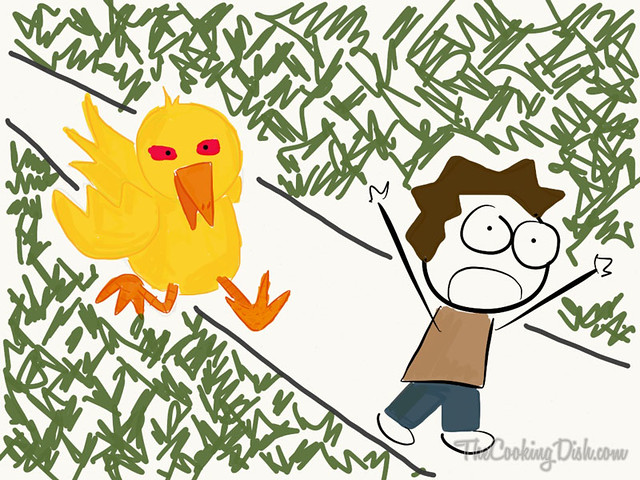



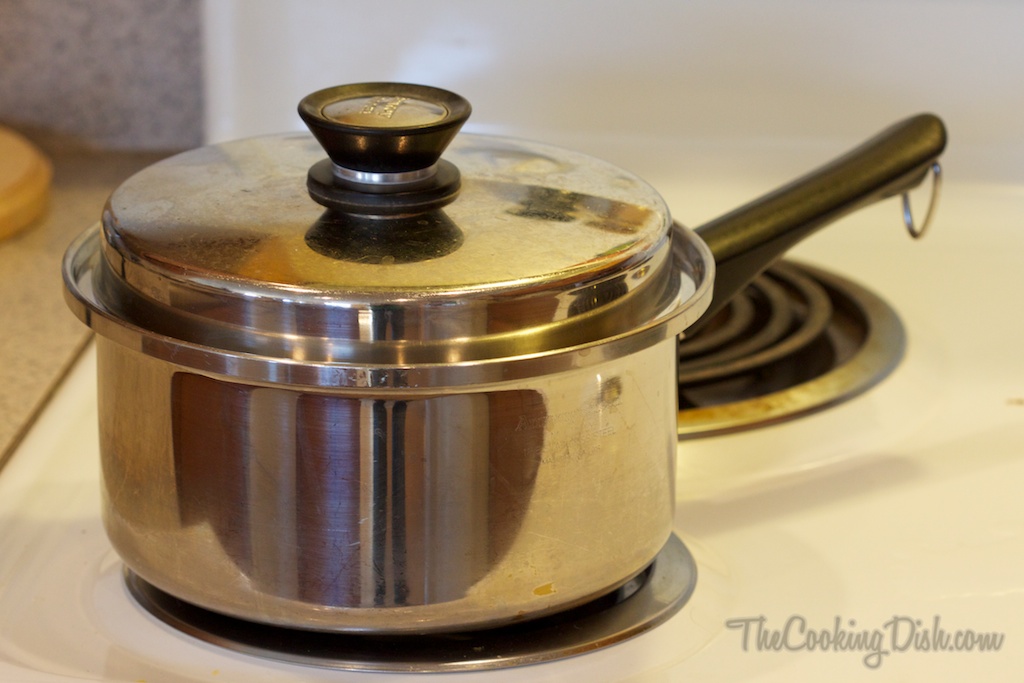
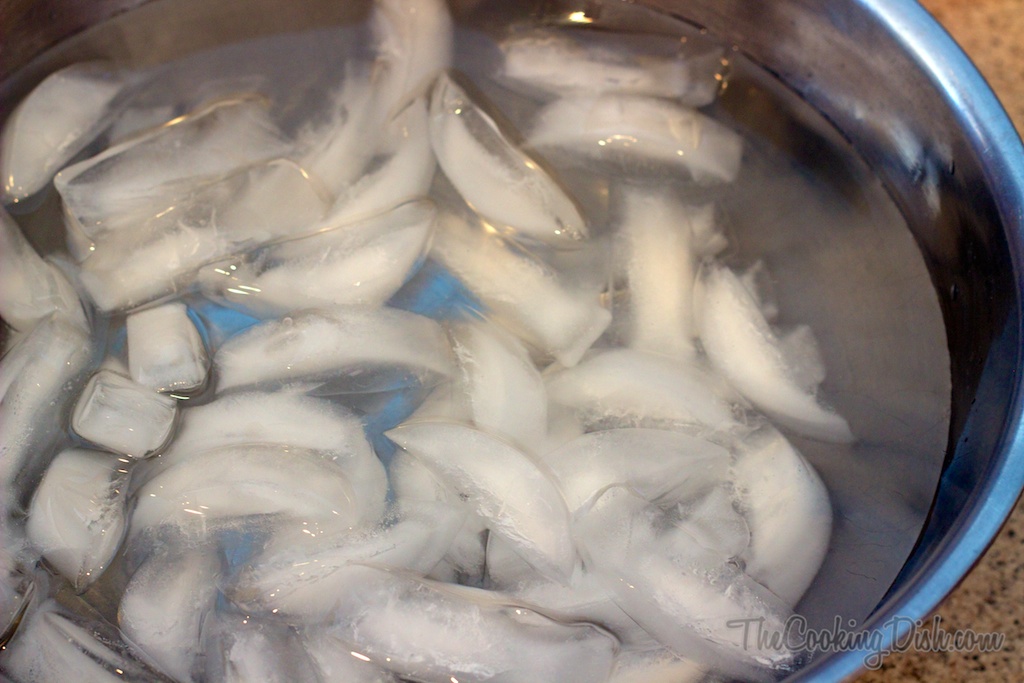
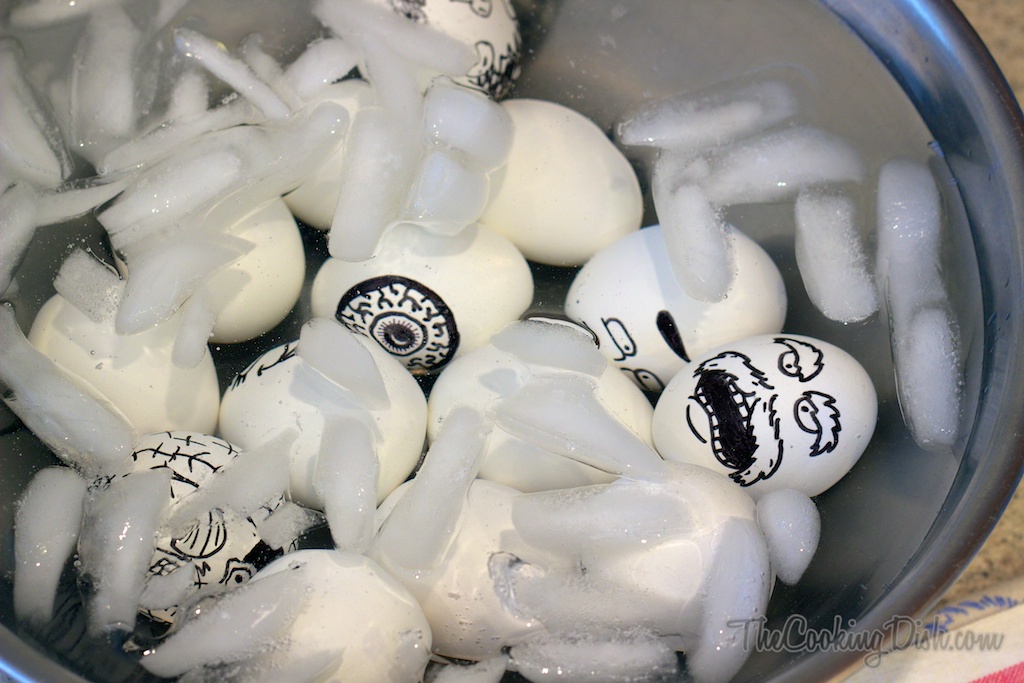
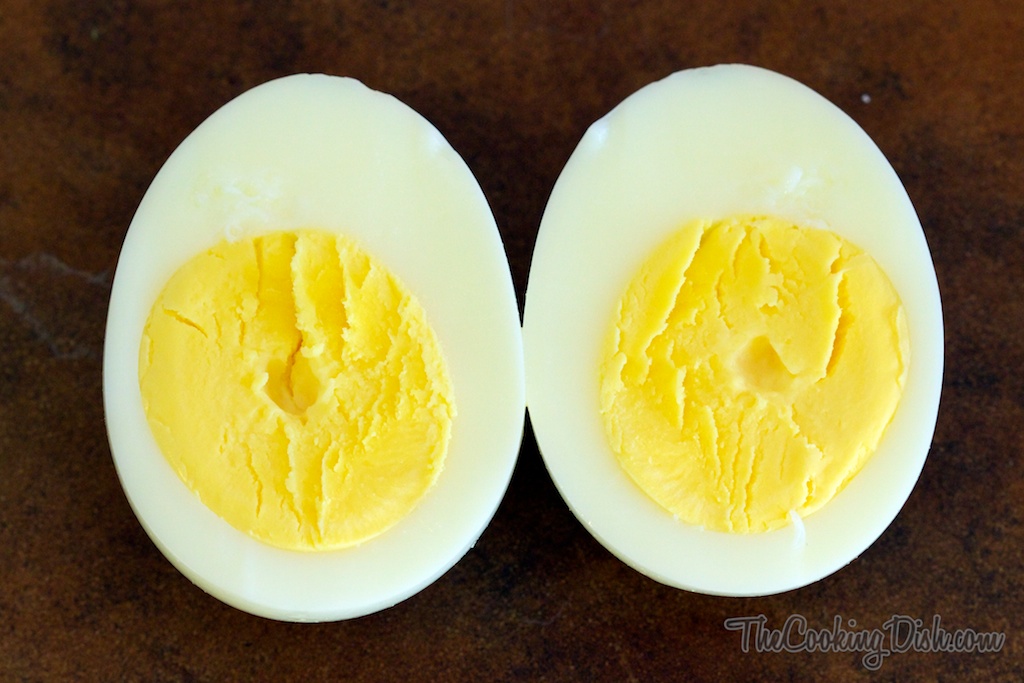
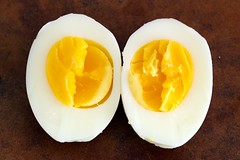
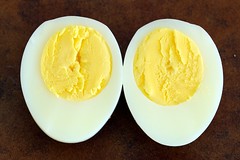
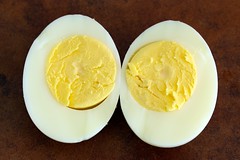
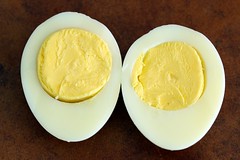
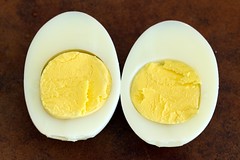
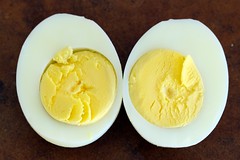



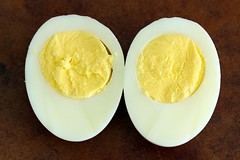
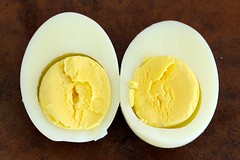
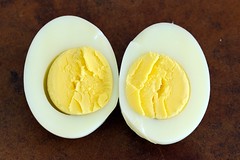
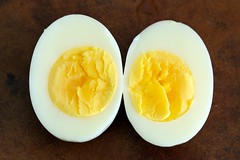
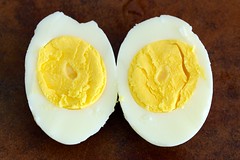

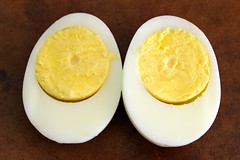
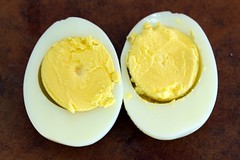
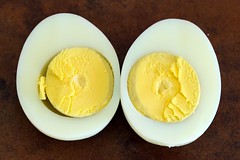
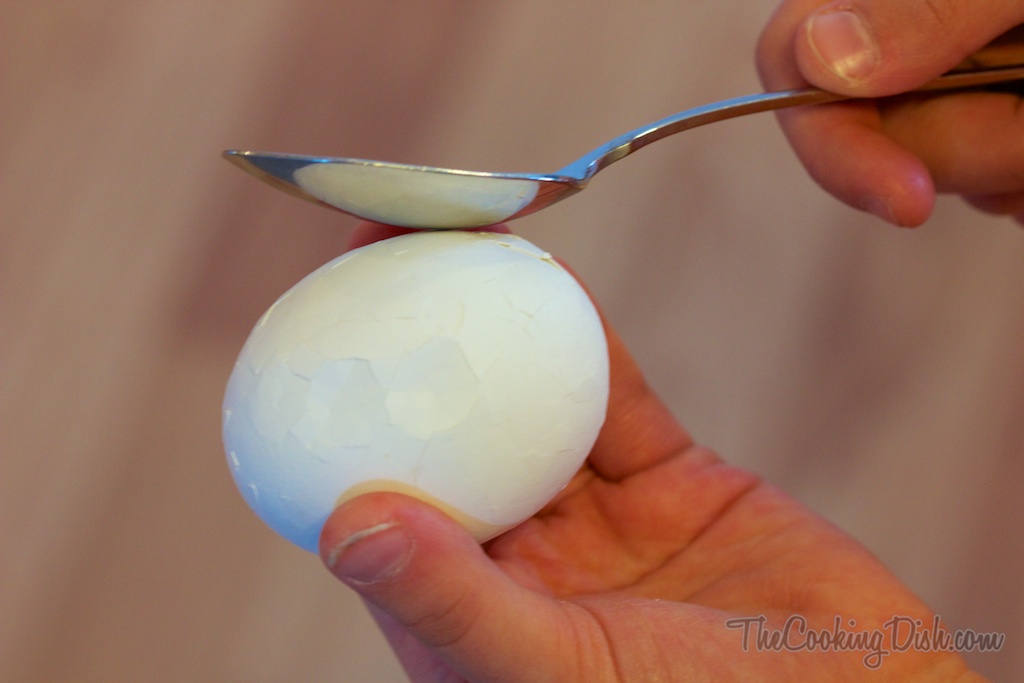
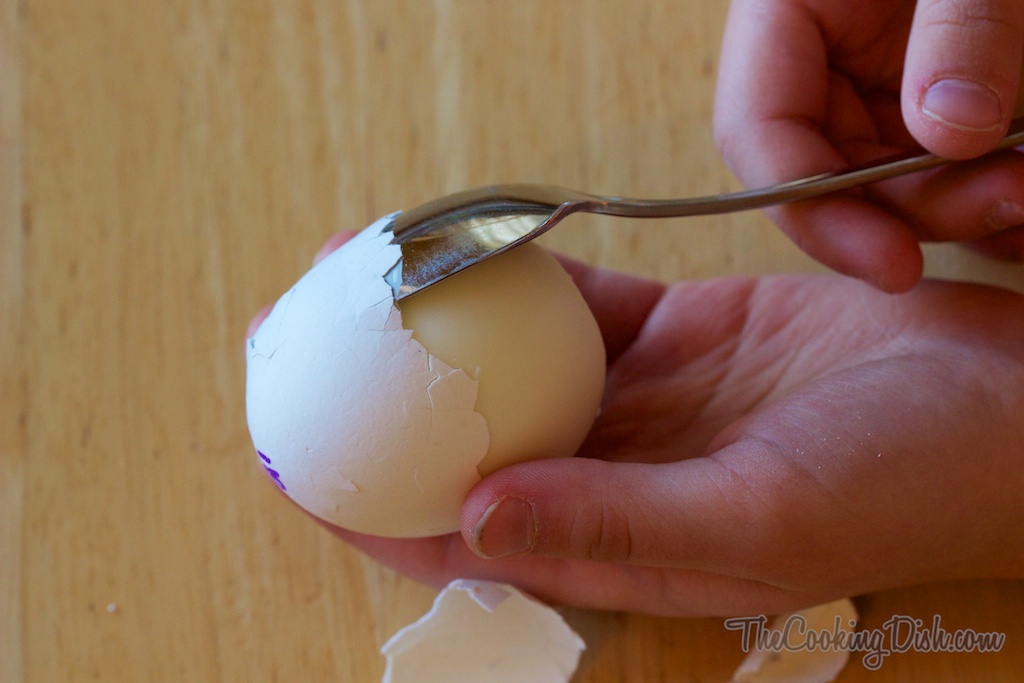
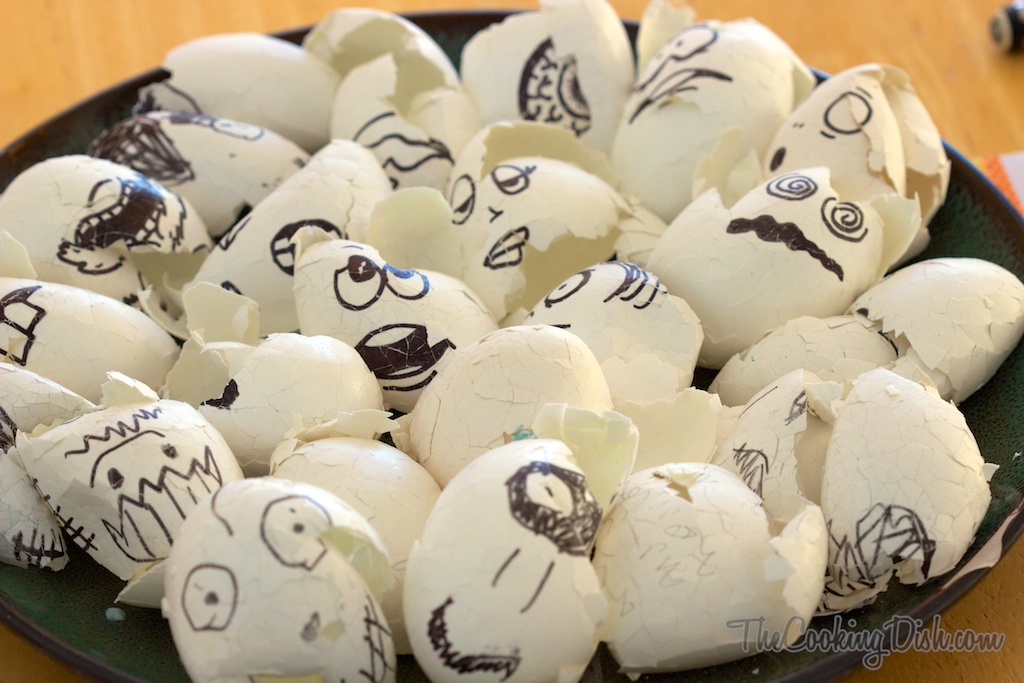

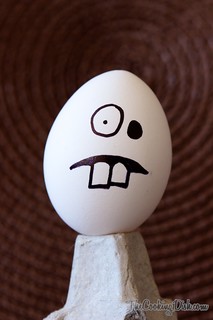
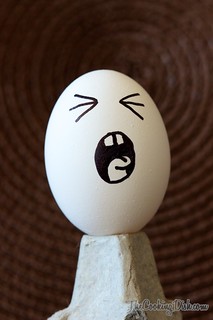
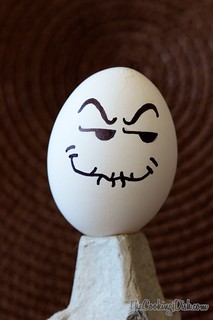
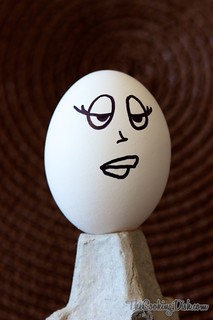
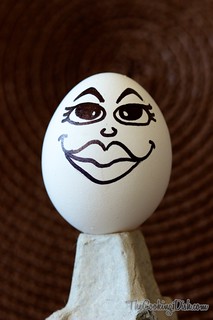
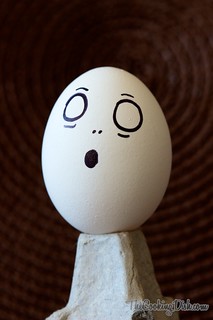
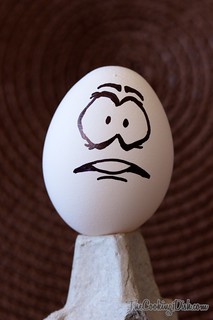
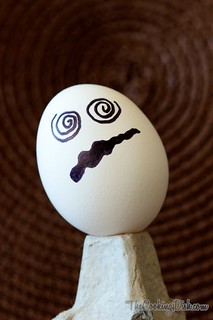
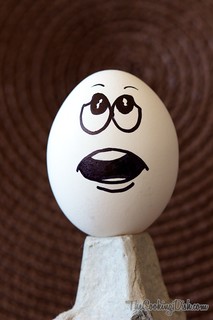
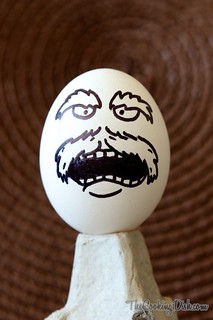
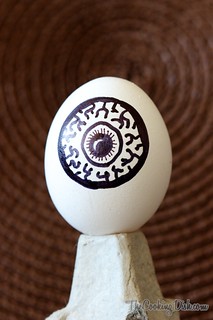

Thank you! Your post is informative & interesting!
Thank you so much!!! The bit on how to peal the eggs saved my sanity! Just tried it and it worked like a charm!
Awesome! Glad it worked out for you 🙂
Sorry, but I followed your directions to the letter and NONE, repeat, NONE of the eggs were cooked to perfection. Everyone was soft! I do not live at a high elevation, so that was not the reason. I’m trying the oven method next!
Sorry that this didn’t work out for you. I live at at an elevation of 4,330 feet and this method has provided amazing results every time. Would you mind describing what you mean by soft so I can get a better idea of how your eggs turned out?
Another way to distinguish hard-boiled eggs from non hard boiled is to place the skins from yellow onions in the water when you cook them. It will dye the shell and not affect the egg color inside.
Thanks for the tip! It seems that this might change the flavor of the boiled egg a bit as it transfers through the egg’s pours. Have you noticed any flavor difference?
There’s no way those are 1, 2, or 3 minute eggs. I always make soft boiled eggs and put them in cold water, bring to a boil, then boil for 3 full minutes and the yolks are completely runny, and sometimes the whites are still a bit runny. Your 1 minute egg is more like a 5 minute egg.
They are in fact 1, 2, and 3 minute boiled eggs. I was quite surprised myself, as I was expecting a runny yolk but did not get it when I opened them up.
Well, I’ve been making my SOFT boiled eggs the same way for over 20 years (the same way my grandmother made them for my grandfather daily for over 60 years) and it’s eggs into cold water, then bring to a boil, then 3 mins at a hard boil, then into a cool bath, lends a yolk like a sunny side up egg. I use cold eggs because I do not store my eggs outside of the fridge as it always gives them an odd taste.
Bonjour,
Merci beaucoup pour ces explications, j’essaierai la prochaine fois que je fais cuire des oeufs.
Une petite remarque : pour peler un oeuf facilement mettre une pincée de bicarbonate dans l’eau de cuisson : ça marche pour moi.
Je n’ai jamais entendu parler de l’utilisation de bicarbonate dans l’eau. Ça a l’air intéressant, je vais faire un essai. Merci pour la lecture!
Great post and very interesting as we have a chicken flock of our own. I will attest that the eggs are a lot better than store bought, which I did not realize at first, but then missus brought home some store bought, and they were just awful.
To test the freshness of eggs, we put them in a sink full of water. If they float, they are old, but if they sink, they are still fresh! I wonder if this inspired the Salem Witch Hunt method of checking to see if a maiden was in fact a witch or a mortal?
Eggs have a bit of air in them for a chick to breath after it has formed in the shell, and as the eggs age, the pocket of air gets larger. We always chuck our farm fresh eggs if they float at all.
You know if it’s a bad egg if it weighs the same amount as a duck… 😉
I was turned into a newt once, but I got better….
Are your eggs at room temperature when you start or are they straight out of the fridge?
If I remember correctly, they were at room temperature.
Thanks, I tried them tonight and they were perfect using the boil and then cover method. Maybe the reason others are saying theirs didn’t work is because they are starting with fridge cold eggs.
Tried this today…I boiled my egg for 6mins b/c I felt 4mins wasn’t enough. Needless to say my 6min egg looked like your 2min egg…not a very realistic chart in my opinion. For other readers, I think 7mins is the magic number.
Hi Brittany,
Sorry to hear this didn’t work out for you. I would highly recommend doing the boil, remove from heat, and cover method instead of just boiling.
I’ve been getting about a 50/50 response rate as to the pure boiling times and how done the egg is at those times. About half are reporting my times are accurate to what they see, the other half saying they’re not long enough.
It looks like I might need to do some more in-depth experimentation and see what’s happening. Thanks for the feedback.
You might investigate whether those who don’t agree with your times are at higher altitudes. I’m in Salt Lake, near 5000 feet elevation, and our water boils at about 204 degrees; it always takes things a few minutes longer to cook here. (I haven’t tried the instructions posted yet; I’ve been following my mother’s instructions all these years and probably way overcooking my eggs.)
I tried the bring to boil / 10 minute covered method, My yokes were 1/2 runny.
Not close to done. I took the eggs directly from the fridge. Do they need to be room temp.?
I boiled the my eggs for 7 minutes and they were perfect. Your tip is fantastic and I have been telling everyone I know to tap their eggs to peel them. I was getting so frustrated making deviled eggs lately. The shell was very hard to get off. Your trick did the trick. Thank you!
How do you define mid-range boil?
Hi Sue,
I’ve updated the steps to include what I meant by that. Basically it’s 210°F-212°F, or just as it begins to reach a vehement boil.
Steam your eggs . Peeling will never be a problem. I use an egg cooker but you can do it with a vegetable steamer in a regular pot. I have used this method for years. Will never boil an egg again.
I’ll have to give this a try.
I did your method to a T and had to toss 4 eggs. They were runny like a Cadbury egg. Disgusting. Not a good chart at sll.
Sorry to hear that. I’m getting a 50% success rate (not that great) on this according to reports, though I’ve not heard them ever being akin to a Cadbury egg. I’ll be revisiting and making updates. It’s been a while, but I’m pretty sure when I did this, I placed the room-temp eggs in room-temp water, brought them to a boil, and once the water started boiling, recorded the times starting at that point. Either way, yes. On the chart I’m not sure I mentioned that. :/
good post!
Are you using electricity or using gaz. There is a difference I. Hard boiled eggs
I’m using an electric stovetop.